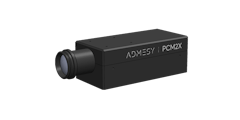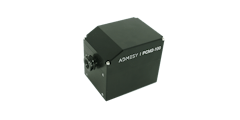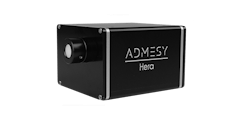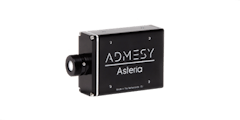
照明
LED 和半导体照明(SSL)常被认为是未来照明的趋势:结合了低能耗,高效技术及使用寿命长等特点。但在LED和半导体照明产品的生产过程中,有个固有的挑战就是它们的亮度,颜色和闪烁这些光学特性,即便在同一生产批次中都会存在一定差异。为保证能生产出高端的照明产品,需要在LED产品的开发阶段就测量这些光学特性,并在生产过程中对所有产品进行检测。传统的LED-半导体照明产品测量包括:
几何与光学配置
| 辐射测量 | 光谱辐射计 | 光度计 | |
|---|---|---|---|
| 积分球 | 辐射功率 [W] | 光谱辐射功率 [W/nm] | 光功率 [lm] |
| 余弦校正器* | 辐照度 [W/m²] | 光谱辐照度 [W/m²/nm] | 照度 [lm/m² = lux] |
| 余弦校正器* | 辐射强度 [W/sr] | 光谱辐射强度 [W/sr/nm] | 发光强度 [lm/sr = cd] |
| 透镜 | 辐射 [W/m²/sr] | 光谱辐射 [W/m²/sr/nm] | 亮度 [lm/m²/sr/ = cd/m² = nit] |
*除了余弦矫正器,还可以用积分球来评定[光谱]辐照度和辐射强度/照度及发光强度
闪烁测量可以通过以上任意光学配置实现。
- 光谱功率分布 决定了光源每个不同波长的总发射功率,体现出光的不同属性,如: 显色性,CRI, CCT等等。
- 辐射,辐照度和辐射强度 测量可测出辐射功率量(W/m²/sr, W/m² 和 W/sr),以及PAR等参数。
- 亮度,照度和发光强度 测量分别决定了每平方米发出的光输出,光通量和发光强度。
- 闪烁 测量用来评定和校准光源的闪烁情况。目前支持:flicker 百分比,index 和 IEEE 1789建议。
- 2D 发光面 测量评定较大发光板或平面的不均匀性等特征。
How are you measuring?
With fibers and other accessories even more type of measurements are possible. Often used accessories are integrating spheres, cuvettes for fluids, light sources or filter holders.
A cosine corrector collects the light from the half space under 180 degrees. A typical application is the illuminance measurement of a lighting situation.
Consumers are used to enjoy top-quality displays in their mobile phones, tablets, laptops and even cars. Emerging technologies such as lighting surfaces for office and home illumination are expected to look equally perfect. Both displays and luminous surfaces are the main application areas for imaging colorimeters.
Measuring the luminance or color values at a specific location of the device under test is a typical use case when measuring displays. It can, however, also be meaningful to assess reflected light.
PCM2X-271

0.000 025 - 30 000 cd/m²
PCM2X-270

0.000 05 - 60 000 cd/m²
PCM2X-102

0.000 05 - 60 000 cd/m²
PCM2-100

0.0003 - 15 000 cd/m²
Viewfinder 光谱仪

标准镜头 1.2° 光斑直径 4.56 mm ‑ 6.71 m
Viewfinder 光谱仪

微距镜头0.75° 光斑直径 0.96 ‑ 1.47 mm
2.1 mm 聚焦透镜色度计

0.001 - 30 000 cd/m² (UHL模式 190 000 cd/m²)
5 mm 色度计

0.001 - 30 000 cd/m² (UHL 模式 190 000 cd/m²)
10 mm 色度计

0.001 - 30 000 cd/m² (UHL模式 190 000 cd/m²)
10 mm 广角色度计

0.0003 - 7 500 cd/m² (UHL 模式 190 000 cd/m²)
20 mm 色度计

0.0003 - 7 500 cd/m² (UHL模式 48 000 cd/m²)
27 mm 广角色度计

0.0001 - 2 800 cd/m² (UHL模式 20 000 cd/m²)
光谱仪

可见光 380 - 780 nm
高端光谱仪

可见光 360 - 940 nm




